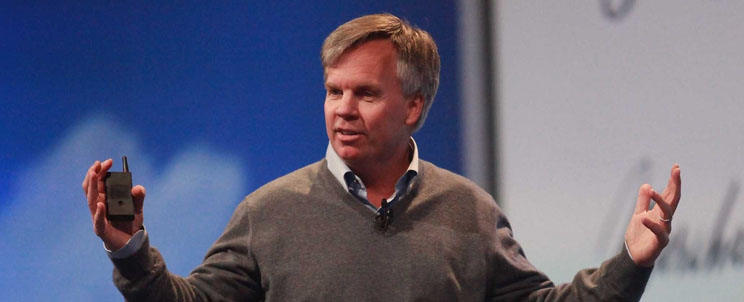
Everyone wants to throw Ron Johnson ex-CEO of JCPenny under the bus, since he lost 50% of the client base, lost hundreds of millions of dollars, and was in Martha Stewart scandal with Macy’s over selling her products during his tenure at JCPenny. I believe through every negative conclusion there has to be some positive silver-ling of the situation, of the evolution, of the branding that Johnson was trying to accomplish for JCPenny. You have to see everything with a third eye when it comes to branding and marketing, take the emotion out of the context.
So let’s take real quick snapshot of Ron Johnson, what he accomplished in the past, and how he landed on JCPenny’s doorstep as CEO. This should give us an insight of the man, his vision, and what he’s capable of accomplishing as a CEO and branding awareness knowledge.
Johnson worked at Target was a VP of Merchandising, their he introduced products that raised Target’s brand image, beyond the likes of Walmart or Kmart. Then moved onward to Apple, he was recommend by Mickey Drexler, an Apple board of director and CEO of Gap, Inc at the time, now he’s CEO of JCrew. Johnson teamed up with Allen Moyer from the Walt Disney Company, to make a series of mock-ups retail stores for the Apple store inside an abandon warehouse in Cupertino. This took about two to three years until it was design, polished and implemented, with Steve Jobs approval stamp. Johnson was the creator of the Genius Bar at the Apple Store, even though at first it was empty, in the long-term the value of creating brand experience with potential clients about Apple products has become their legacy for user experience, brand awareness and brand trust.
So now onto JCPenny, and steps in Ron Johnson as CEO, drum roll please…
Here was Johnson’s vision for JCPenny’s future in December of 2011, Johnson stated:
“Over the past 30 years, the department store has become less relevant… largely because of decisions the stores have made… They didn’t think about the future so much as try to protect the past.” The problem, he explained, wasn’t the stores’ size or location or marketing power or physical capabilities, “It’s their lack of imagination — about the products they carry, their store environments, the way they engage customers, how they embrace the digital future.”
Johnson saw the long-term goals for JCPenny, he just wanted to reach them at an accelerated rate, without really building the branding culture and partnering with the JCPenny team, which should of been some red flags.
Store-In-Store Branding. Johnson implemented mini branding for each retailer within the JCPenny umbrella this was fantastic, this makes the customer feel the brand experience of that specific brand.
Brand Identity. Johnson implemented a logo change, to be more clear, simple, fresh and appeal to the younger demographic so he can connect with his targeted audience.
Digital Media Branding. Johnson implemented a change with the website design and development, to make it more clean and direct so the user can find the trendy brands accordingly.
Brand Experience. Johnson’s original Khaki Bar featured long wooden tables equipped with iPads loaded with sizing and style apps. Johnson’s plans for coffee bars and food stands dotted throughout the stores.
And now JCPenny new CEO Myron Ullman, has stated they implementing some of Johnson’s original visions and plans but on a smaller scale version, because it’s too costly to roll everything out in one shot. So what went wrong at JCPenny’s and why did Johnson’s plan considered a failure in the eyes of some readers, and what my thoughts are on how Johnson missed the boat with brand trust, user experience, and corporate branding.
Brand Trust. Johnson was looking towards the future, but he forgot about the core customers that upheld JCPenny for years, that is a majority factor of the revenue for the company. As he was rebuilding the brand with the destroy and rebuild concept, JCPenny’s customers expect promotions around holidays. But the eager Johnson did away with these sale events, he should of kept this concept going while brand transitioning, JCPenny’s was not a dead brand, it had a following, he was treating it like it was a dead brand.
User Experience. Johnson’s corporate branding turned off a lot of customers, as the transition was done too quickly, and not executed with enough planning and brand strategy to make sure it gets a positive response ratio from consumers and vendors alike.
Corporate Branding. Johnson’s plan to do corporate rebranding was phenomenal, he did it boldly and he bullied everyone along to cater more to the younger demographics. The problem is he should made this corporate rebranding plan over a 3-5 year period, so the old customers can adapt to the new changes, and be accepting and embracing of the transition period.
Creative Partnerships. Johnson should of partnered with more people at JCPenny instead of bullying the board around to only his way of thinking. Apple retail stores was not build within a year, and it was a partnership relationship between many people, something Johnson skipped while during his tenure at JCPenny.
So Johnson spend hundreds of millions of dollars, trying to do his corporate branding efforts, in comparison if he done it over five years, this number wouldn’t look so terrible. There is no doubt Ron Johnson is a genius, and the actual living proof that majority of Johnson’s plans are still in motion on a smaller scale. Someone should of slowed him down a little bit, but far too much people with a position of power try to change things to quickly without really weighing the pros and cons of the company, along with timing and some luck. I see this far too often in corporate industies.


